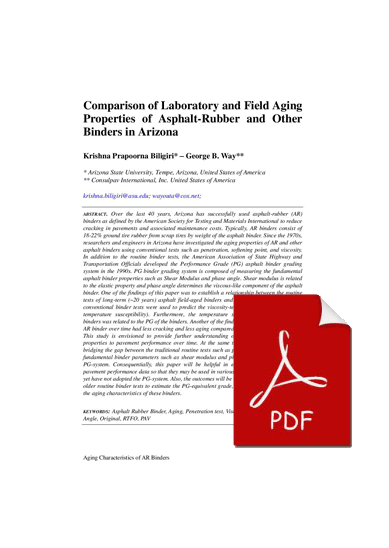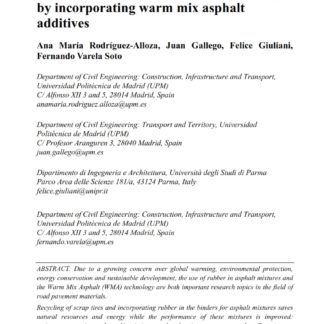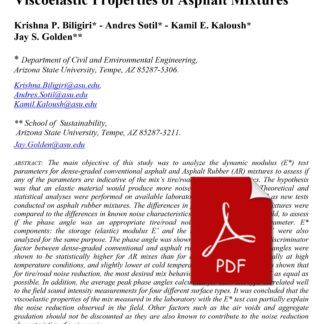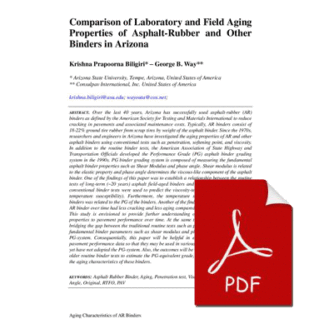Description
Over the last 40 years, Arizona has successfully used asphalt-rubber (AR) binders as defined by the American Society for Testing and Materials International to reduce cracking in pavements and associated maintenance costs. Typically, AR binders consist of 18-22% ground tire rubber from scrap tires by weight of the asphalt binder. Since the 1970s, researchers and engineers in Arizona have investigated the aging properties of AR and other asphalt binders using conventional tests such as penetration, softening point, and viscosity. In addition to the routine binder tests, the American Association of State Highway and Transportation Officials developed the Performance Grade (PG) asphalt binder grading system in the 1990s. PG binder grading system is composed of measuring the fundamental asphalt binder properties such as Shear Modulus and phase angle. Shear modulus is related to the elastic property and phase angle determines the viscous-like component of the asphalt binder. One of the findings of this paper was to establish a relationship between the routine tests of long-term (~20 years) asphalt field-aged binders and the PG system. In addition, conventional binder tests were used to predict the viscosity-temperature relationships (i.e. temperature susceptibility). Furthermore, the temperature susceptibility of the asphalt binders was related to the PG of the binders. Another of the findings of the study was that the AR binder over time had less cracking and less aging compared to the other asphalt binders. This study is envisioned to provide further understanding of the degree of field aging properties to pavement performance over time. At the same time, this work will assist in bridging the gap between the traditional routine tests such as penetration and viscosity and fundamental binder parameters such as shear modulus and phase angle in addition to the G-system. Consequentially, this paper will be helpful in examining binder aging and pavement performance data so that they may be used in various parts of the world that as of yet have not adopted the PG-system. Also, the outcomes will be valuable to be able to use the older routine binder tests to estimate the PG-equivalent grade, and draw conclusions about the aging characteristics of these binders.







